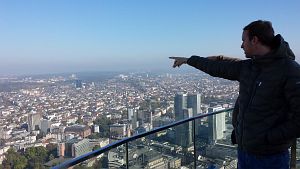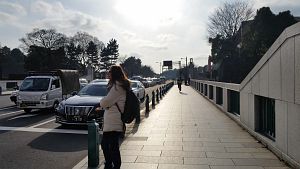Science and Society …
How is science helping us to improve life in the city? How does it help us to predict high-impact weather events? Water and wind today influence all of our lives: by its impact on travel, by strong dependence of renewable energy on clouds and winds, and by the dependence of agriculture and many other parts of or modern society on the atmosphere, precipitation, rivers, clouds and wind!
Basic Science. First, basic science aims to understand the processes which are relevant to a particular event or phenomenon. For example, there is cloud microphysics, which describes how clouds are built. It combines physical and chemical insight with meteorological knowledge, and in all of it models are formulated and tested based on the language of mathematics. There are students and professors, smaller and larger teams, which carry out experiments, formulate systems of equations, carry out simulations, test their theories and then publish them in both science journals and for the general public.
Applied Science. Usually, basic science tries to achieve understanding, and applied science tries to work on influencing applications, on simulations and predictions, on using the science to actually make a difference. That might not be easy. For example: when you want to calculate a weather forecast, you need to be fast. If it takes you a week to calculate a forecast for a week, the weather has already moved on.
 Modern Supercomputing. Today, in modern supercomputing centres, we have 15 minutes to determine the state of the atmosphere on a global scale, and then less than one hour to calculate forecasts for three days. This is done every 6 hours. If it comes to fast high-impact events like heavy thunderstorms with strong precipitation, we do it even every three hours with a forecast lead time of one day (24 hours). That means we have about 30 minutes to carry out the task. We want to get forecasts for the next 6-12 hours every hour, and forecasts for the next 2 hours every 5 minutes! To do this, it needs very advanced science, new high-resolution measurements, new algorithms, new computers: it needs new ideas all the time. And it needs teams of dedicated scientists, who carry out the programming and make sure that forecasts are reliable and state-of-the-art!
Modern Supercomputing. Today, in modern supercomputing centres, we have 15 minutes to determine the state of the atmosphere on a global scale, and then less than one hour to calculate forecasts for three days. This is done every 6 hours. If it comes to fast high-impact events like heavy thunderstorms with strong precipitation, we do it even every three hours with a forecast lead time of one day (24 hours). That means we have about 30 minutes to carry out the task. We want to get forecasts for the next 6-12 hours every hour, and forecasts for the next 2 hours every 5 minutes! To do this, it needs very advanced science, new high-resolution measurements, new algorithms, new computers: it needs new ideas all the time. And it needs teams of dedicated scientists, who carry out the programming and make sure that forecasts are reliable and state-of-the-art!
 Public Service and Companies. Providing a service for the public every three hours, or every hour, or every 5 minutes with reliable forecasts cannot be carried out by a university. If each and every airplane departure depends on such a service, you need a very reliable team of people dedicated to this task. Think about this: if the impact is very important for the whole society, it should not be done by a company. The state needs institutions like a national weather service, equipped with a modern supercomputer to do this. At the same time, the scientists who program the forecasts need the intense interaction with researchers which are not bound by the constraints of immediate delivery. And all of us need different companies to work on services and products based on the insight, algorithms and methods which scientists develop day by day …
Public Service and Companies. Providing a service for the public every three hours, or every hour, or every 5 minutes with reliable forecasts cannot be carried out by a university. If each and every airplane departure depends on such a service, you need a very reliable team of people dedicated to this task. Think about this: if the impact is very important for the whole society, it should not be done by a company. The state needs institutions like a national weather service, equipped with a modern supercomputer to do this. At the same time, the scientists who program the forecasts need the intense interaction with researchers which are not bound by the constraints of immediate delivery. And all of us need different companies to work on services and products based on the insight, algorithms and methods which scientists develop day by day …
 Your Role. There are scientists working on pure science. There are scientists working on applied science. There are those working in the supercomputing centres, in the public services, in the many companies active around the globe. Where is your own role? What attracts you most: the basic science, trying to understand the phenomena? Or the applied science, with algorithms and programs? Or the science working in the framework of a supercomputing centre, making it work efficiently for real large-scale applications? Or the scientist making sure the service is delivered to a wide range of people, to many countries and many industries? Science is touching all layers of our society! It is fascinating and exciting, and there is space for each and every character, for many different people!
Your Role. There are scientists working on pure science. There are scientists working on applied science. There are those working in the supercomputing centres, in the public services, in the many companies active around the globe. Where is your own role? What attracts you most: the basic science, trying to understand the phenomena? Or the applied science, with algorithms and programs? Or the science working in the framework of a supercomputing centre, making it work efficiently for real large-scale applications? Or the scientist making sure the service is delivered to a wide range of people, to many countries and many industries? Science is touching all layers of our society! It is fascinating and exciting, and there is space for each and every character, for many different people!
Find your own role and place, and then enjoy it and contribute!


